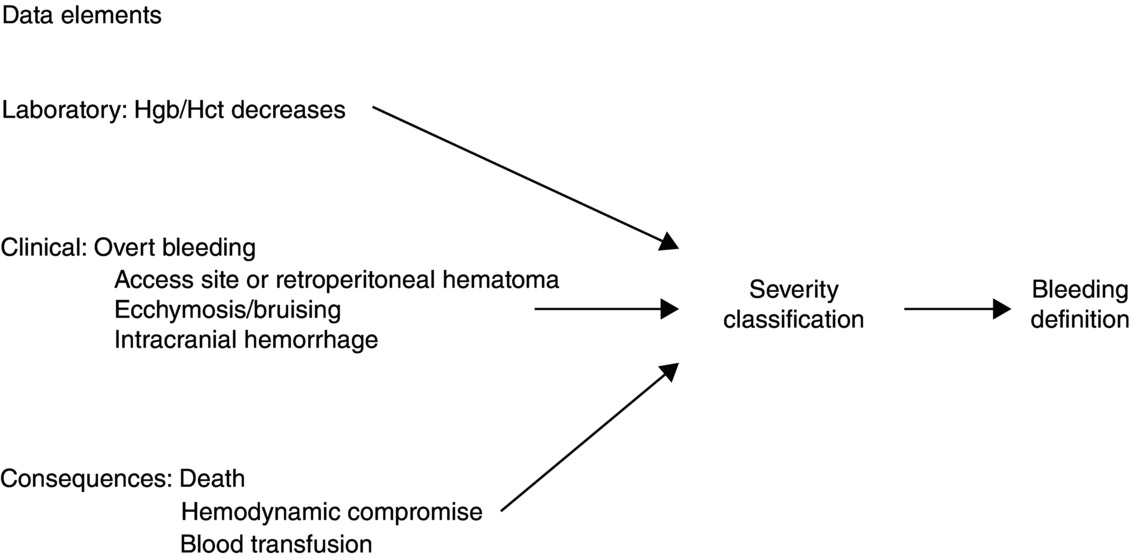31 Sameer Bansilal1, Deborah E. Aronson1, and Roxana Mehran1,2 1The Icahn School of Medicine at Mount Sinai, New York, NY, USA 2Cardiovascular Research Foundation, New York, NY, USA Over the last two decades, several potent antithrombotics have been developed with a focus on reduction of ischemic outcomes, with less attention to the inevitable increase in bleeding risk. As regimens continue to emerge and evolve, it has become increasingly complex to balance the ischemic and bleeding risks in acute coronary syndrome (ACS) patients. Agents include intravenous antithrombotics such as fondaparinux, bivalirudin, and cangrelor; oral antiplatelet agents such as clopidogrel, prasugrel, and ticagrelor; oral anticoagulants such as rivaroxaban, dabigatran, and apixaban; and several novel and derivative agents that are in various phases of testing. While these more potent agents have significantly reduced ischemic outcomes, using them in combination as is frequently necessary post percutaneous coronary intervention (PCI), is associated with an increased risk of bleeding.It has been shown that major bleeding post PCI is associated with significant increases in both short- and long-term morbidity and mortality [1, 2]. In a pooled analysis of 34,146 ACS patients from registries and clinical trials, Eikelboom et al. found that major bleeding was associated with a 5-fold increase in the 30-day mortality and the risk increased incrementally with bleeding event severity [3]. In the Acute Catheterization and Urgent Intervention Triage Strategy (ACUITY) trial, major bleeding was associated with a 7-fold increased risk of mortality and higher rates of composite ischemia (23.1% vs. 6.8%) and stent thrombosis (3.4% vs. 0.6%) [2]. In an ACUITY substudy, the risk of myocardial infarction (MI) and mortality (up to 1 year post procedure) both increased linearly with bleeding severity [4]. To understand the safety profile of a therapy, it is essential to accurately characterize bleeding events. Multiple bleeding definitions were derived from several seminal clinical studies, in their attempt to best characterize such events (Table 31.1). Table 31.1 Definitions of Major or Severe Bleeding in Randomized Controlled Clinical Trials The Thrombolysis in Myocardial Infarction (TIMI) [5] and Global Use of Strategies to Open Occluded Arteries (GUSTO) [6] trials were based on combinations of three major principal components, namely, clinical events including overt bleeding, access site hematoma, and cardiac tamponade; laboratory parameters including changes in hemoglobin (Hg) and hematocrit (Hct) levels; and outcomes including death, hemodynamic compromise, and transfusion (Figure 31.1) [7]. In both cases, bleeding was classified by severity using the subjective terms minimal, mild, and major for TIMI and mild, moderate, and severe in GUSTO. The TIMI definition neglects precise Hg measurement timing and relies overly on laboratory measurements without the clinical context, while GUSTO is largely a clinical events based definition and does not take Hg drops or blood transfusion quantification into account, which alters interpretation considerably. For example, a patient undergoing PCI with a Hg drop of 2 g/L, with no obvious bleeding site, and who received a transfusion is classified by TIMI as major, but has no appropriate classification according to GUSTO. In the randomized, controlled trial, Superior Yield of the New Strategy of Enoxaparin, Revascularization and Glycoprotein IIb/IIIa Inhibitors (SYNERGY) [8], the safety and efficacy of enoxaparin, a low-molecular-weight heparin, was compared with unfractionated heparin in 10,027 patients. The authors found enoxaparin had a higher rate of TIMI major bleeding but GUSTO severe bleeding was not statistically significant. Figure 31.1 Constructing a bleeding definition from three principal components. (Source: Adapted from Rao S and Mehran R 2012 [7]. Reproduced with permission of Wolters Kluwer Health.)
Bleeding Definitions
Introduction
Heterogeneous bleeding definitions
Type of bleeding
GUSTO
TIMI phase I
TIMI phase II
REPLACE-2
OASIS-5 ESSENCE
CURE
STEEPLE
ACUITY HORIZONS
PLATO
Intracranial/intracerebral
+
+
+
+
+
+
+
+
+
Intraocular
–
–
–
+
+
+
+
+
+
Retroperitoneal
–
–
–
+
+
+
+
+
–
Bleeding causing hemodynamic compromise
+
–
–
–
–
+
+
–
+
Cardiac tamponade
–
+
+
–
–
–
–
–
+
Bleeding requiring surgical intervention
–
–
–
–
–
+
+
+
+
Hematoma >5 cm at the puncture site
–
–
–
–
–
–
–
+
–
Transfusion, units
≥1
≥1
≥1
≥2
≥2
≥2
≥1
≥1
≥4
Decrease in Hgb with overt bleeding, g/dL
–
≥5.0*
≥3.0
≥3.0
≥3.0
–
≥3.0
≥3.0
≥5.0
Decrease in Hgb without overt bleeding, g/dL
–
–
–
≥4.0
–
≥5.0
–
≥4.0
–

Stay updated, free articles. Join our Telegram channel

Full access? Get Clinical Tree


